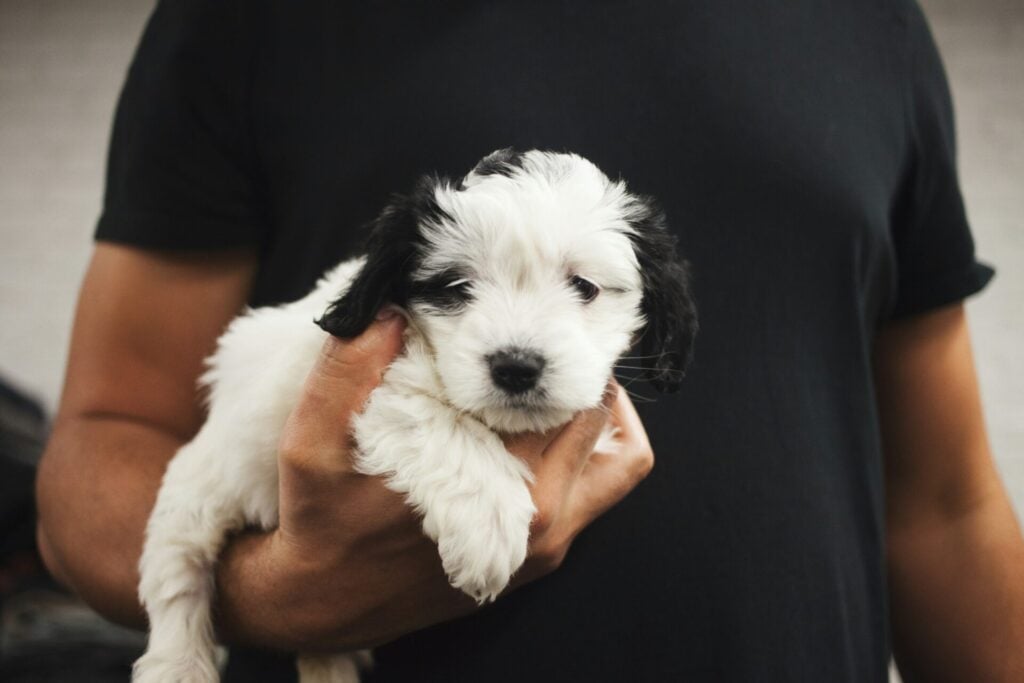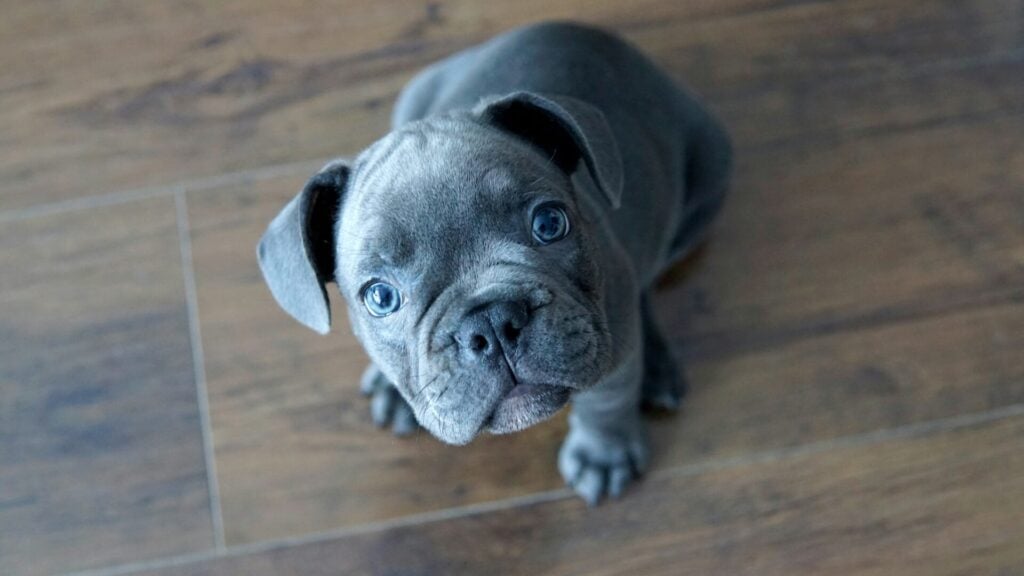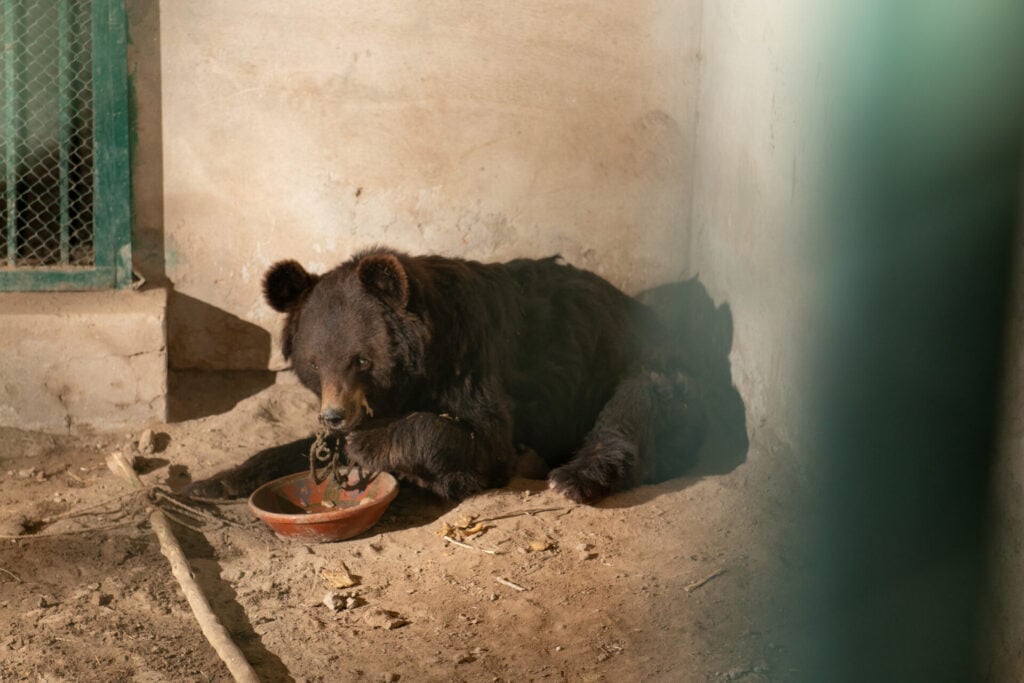Fluffy coat, big ears, unusual fur colour, social media is flooded with dubious puppy traders putting ‘cute’ or ‘special-looking’ dogs for sale. But those eye-catching looks come at a great price for the animals: lifelong health problems.
According to animal welfare organisation FOUR PAWS, puppy traders, both professional and unlicensed, are increasingly catering to online trends, manipulating dogs’ appearance through selective breeding, genetic mutations, and even surgery to meet demand. In the process, they’re putting the animals at risk of lifelong health issues, pain, and behavioural problems.
‘Tiny dogs that can be carried around like accessories, new breed variations like the unusually fluffy French Bulldog – illicit online sellers profit off the search for ‘cute’ and ‘aesthetic’ features desired by many prospective dog owners,’ says Nick Weston, Senior Specialist responsible for ‘Animals Cruelly Traded and Transported’ at FOUR PAWS. ‘It’s horrifying to see that current dog trends are created for the human eye and sideline the repercussions they have on the animals. Dogs should not suffer just to be aesthetic pets’.

Unregulated social media groups have turned into a hotspot for illicit puppy traders and breeders selling questionable dog trends under the disguise of ‘cute’ puppy ads. Though the sale of animals by private individuals goes against Meta’s community guidelines, the great quantity of posts and specialised groups, shows that strict enforcement is lacking.
Over 100,000 people have signed global animal welfare organisation FOUR PAWS’ petition urging the company Meta to stop the selling of dogs on its social media platforms.
‘It is horrifying to see that current dog trends are created for the human eye and sideline the repercussions they have on the animals. Dogs should not suffer just to be aesthetic pets’
Nick Weston, FOUR PAWS
‘To protect puppies and curb online animal cruelty, Meta must suspend dog ads by private individuals on Facebook and Instagram until the trade is properly regulated on its sites,’ says Nick. ‘We urge Meta to close policy loopholes currently exploited by illicit breeders and sellers and improve their moderation to swiftly remove non-compliant adverts’.
FOUR PAWS has identified five major dog trends that are harmful to the animals but popular on social media. Many of them are fuelled by puppy traders looking to profit from the latest viral look, and once you know what to look for, you may never scroll the same way again.
Unnatural fur colours caused by gene mutations

The unusual merle pattern of black, grey, white, red or blue fur patches seen across a broad spectrum of dog breeds is caused by the merle gene – a genetic mutation affecting pigment production. While it is not inherently considered defect breeding to breed dogs with the gene mutation, it becomes unethical and dangerous if done irresponsibly. It can affect a dogs’ health and puts them at risk of being or becoming deaf, blind and developing neurological issues such as seizures. Other unnatural fur colours caused by gene mutations include lilac, silver or velvet with similar health repercussions.
In some cases, breeds like Dachshunds – which do not naturally carry the merle gene – are being deliberately crossbred with merle-coated breeds such as Chihuahuas by puppy traders to produce ‘designer’ puppies with dappled coats, often at the expense of the animal’s health.
New dog breed variations

Closely connected to an obsession with ‘uniqueness’ comes the desire to create new variations of existing dog breeds. Despite puppy traders claiming that the dogs come with a pedigree, most of these new breeds are not officially recognised by the major kennel clubs.
French Bulldogs are one of the breeds that fall victim to the craze of new variations. As such, many of them already suffer from deficits caused by their very short nose and muzzle – such as breathing problems or lacking temperature regulation in the heat. The new Fluffy French Bulldog variation with its long fur only adds up to their breathing- and heat-related problems. Isabella French Bulldogs have a lilac to grey-lilac diluted coat colour and are prone to genetic conditions causing hair loss, dry, itchy and flaky skin, sunburn and even skin infections.
Dogs bred with long thick fur store heat and moisture for longer, putting them at risk of skin, bacterial and yeast infections, parasites and painful mats.
Cropped ears and docked tails

To evoke a ‘frightening’ appearance for bigger breeds like Boxers, Dobermanns, Bulldogs, Cane Corsos and Great Danes, some dogs and even puppies have their ears cropped and tails docked before going for sale online. Not only are both practices extremely cruel to the animal but also illegal in many countries like Austria or the Netherlands. Dogs are left with long-term pain, distress and it can even hinder them from communicating naturally with other dogs and humans through body language and ear positioning.
Tiny dogs: Human convenience vs. animal health

So-called ‘tiny dogs’ or ‘teacup’ breeds are deliberately bred by puppy traders to be significantly smaller than the natural standard for their breed, purely for aesthetic appeal or the convenience of being carried around in a handbag. While they may look cute and fragile, their miniature size often comes at a huge cost. These dogs’ small bodies struggle to support essential physiological functions, making them highly prone to health complications. Many suffer from chronic issues such as joint deformities, breathing difficulties, underdeveloped organs, and hypoglycaemia, particularly as puppies. Despite these risks, demand remains high due to social media trends and celebrity influence, fuelling a breeding practice that prioritises size over the animal’s wellbeing.
Very short muzzles

Seen in pugs, French Bulldogs, and other flat-faced breeds, extremely short muzzles and small, compressed noses may give dogs a baby-like appearance that many people find endearing, but the reality is far from cute.
These breeds often suffer from Brachycephalic Obstructive Airway Syndrome (BOAS), a condition that makes it difficult for them to breathe properly, even at rest. Everyday activities like walking, eating, or playing can leave them struggling for air. Because dogs also regulate their body temperature through panting, short-nosed breeds are at much higher risk of overheating and heatstroke, particularly in warm climates or during travel.
Many require surgery just to improve their ability to breathe, and yet the demand for these breeds continues to rise, driven by social media and puppy traders’ advertising.
What Responsible Puppy Buyers Should Do
Before bringing a new dog into your life, it’s vital to look beyond the photos and ask the right questions. Prospective dog owners should always research the breed’s natural characteristics, health predispositions, and care requirements.
Be wary of unusual coat colours, extreme physical traits, or sellers who avoid transparency. If something feels rushed, secretive or overly curated for social media, it likely is.
Reputable breeders will never sell puppies through social media or meet in car parks, they will be happy to show you the puppy’s parents, health records, living environment, and breeding practices.
Above all, adoption should always be the first option: countless healthy, loving dogs of all breeds – including purebreds – are waiting for homes in shelters and rescue organisations. Choosing to adopt instead of supporting puppy traders not only gives a dog in need a second chance, it also helps put an end to exploitative and harmful breeding practices driven by online trends.









